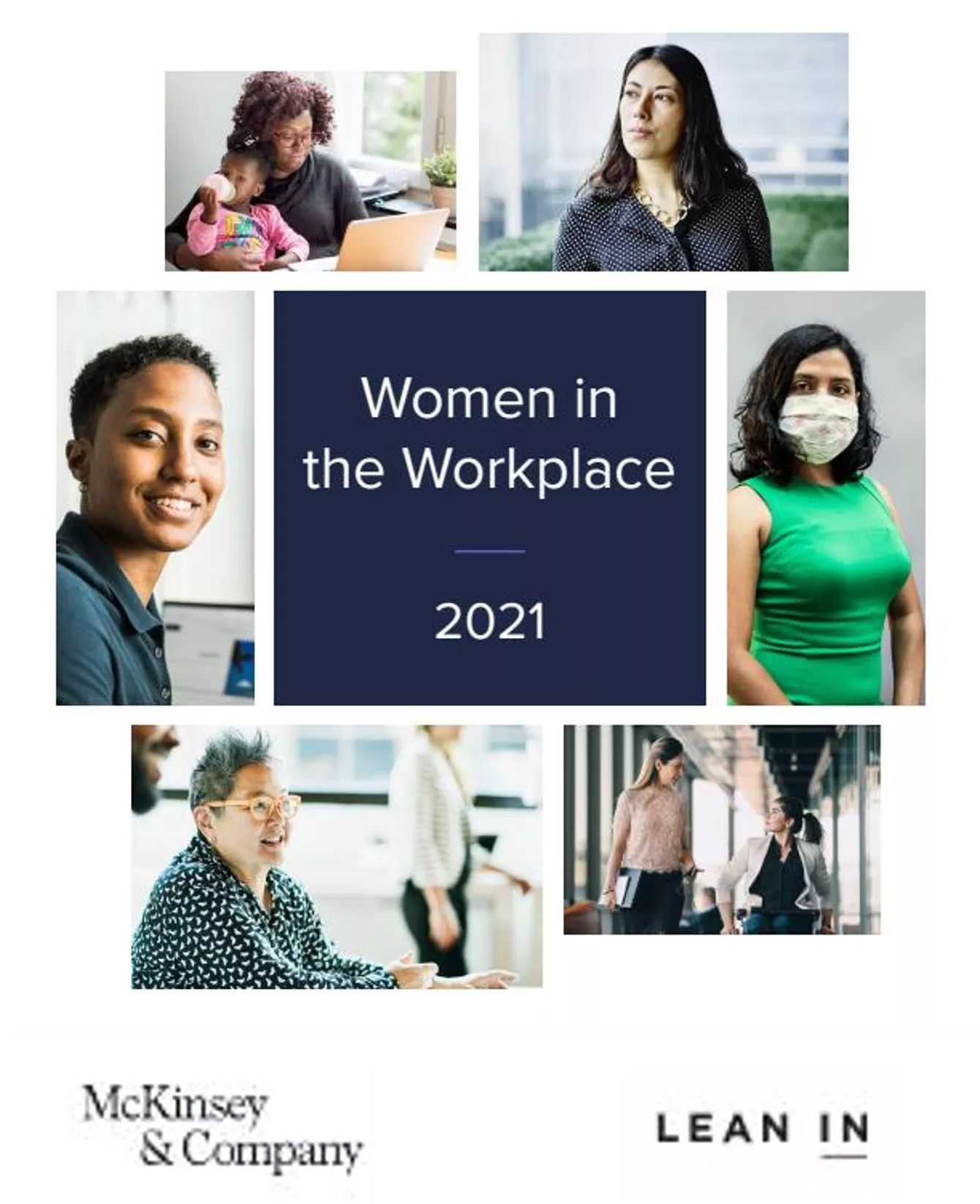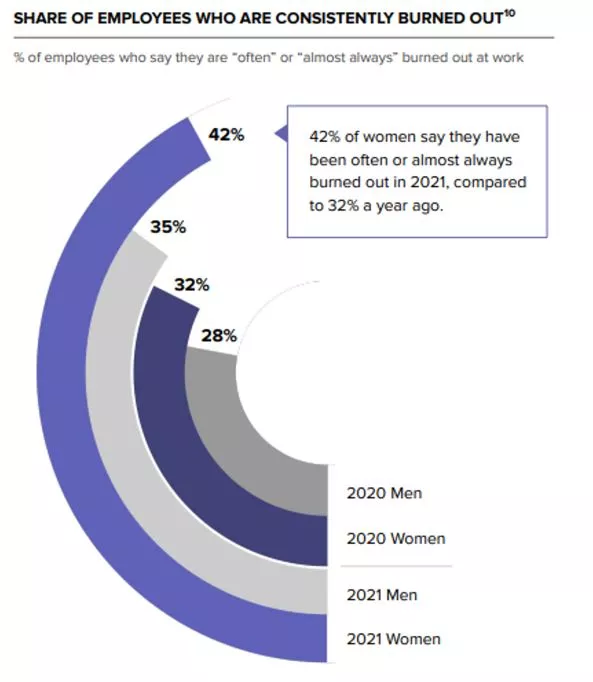
In 1967, the pioneering female programmer Grace Hopper said that women were well-suited for computer programming. Programming, she said, is “just like planning a dinner… You have to plan ahead and schedule everything so it’s ready when you need it.”
When Hopper entered the field, computer programming was considered clerical work that could be completed by low-skill workers – meaning, by women – and lacked both prestige and good pay. Women dominated the field in the 1940s and 1950s. But as programming’s reputation rose with the growing realization that it required sophisticated thinking and advanced skills, women started to be systematically shut out of the profession in favor of men through biased aptitude tests and personality profiling. By the ‘60s, when Hopper likened programming to preparing dinner, men were taking over the field – and the prestige and pay for the same work leapt dramatically.
Today, women make up less than 25% of the computing workforce. Black, Indigenous, and Latina women represent 16% of the U.S. population but just 4% of the computing workforce, and are completely absent among CEOs of Fortune 500 tech companies. And women in computing earn about $0.88 for every dollar their male counterparts are paid.
Hidebound thinking dies hard. Considering the history of computing and the low expectations for women that were once widespread in academia and the workplace, little wonder that women continue to face significant hurdles in the microelectronics industry. The once-common assumption that girls and women were poor fits for STEM higher education and careers drove many to pursue careers in other fields – and the cultural fallout continues to plague women of all ages.
 COVID has created yet more barriers for women. In September, McKinsey & Company released Women in the Workplace 2021, the largest study of women in corporate America and the consulting firms’ seventh in partnership with LeanIn.org. McKinsey found that women are even more burned out than they were last year, and “increasingly so more than men.” The study also shows that “women have increased their efforts to support employee well-being and diversity, equity and inclusion (DEI), but that work is not getting recognized.”
COVID has created yet more barriers for women. In September, McKinsey & Company released Women in the Workplace 2021, the largest study of women in corporate America and the consulting firms’ seventh in partnership with LeanIn.org. McKinsey found that women are even more burned out than they were last year, and “increasingly so more than men.” The study also shows that “women have increased their efforts to support employee well-being and diversity, equity and inclusion (DEI), but that work is not getting recognized.”
Burnout is a serious concern. Forty-two percent of women surveyed reported feeling burned out often or almost always in 2021, compared to 32% a year ago. The gap in burnout between women and men has almost doubled. One in three women has considered leaving the workforce or scaling back their career – an increase from one in four in the early months of the pandemic.
One factor contributing to burnout among women leaders is that they are doing more than their male counterparts to support their colleagues and direct reports on a personal level in areas such as well-being, work-life balance, and DEI. The study found that “Senior-level women are twice as likely as senior-level men to dedicate time to these tasks at least weekly,” even when that work falls outside their job responsibilities. And women are more active allies to women of color. When companies and managers support employee well-being and DEI, workers are happier and less likely to leave their jobs. But few organizations are recognizing employees who go above and beyond in this work – widely viewed as office housework that can make a company stronger but seldom leads to advancement and is not rewarded monetarily.

Women in the Workplace 2021, McKinsey & Company
One bright spot emerges in the report: Women’s representation has increased across the corporate pipeline since 2016, with the highest gains at the manager and C-suite levels. Even with these improvements, a broken rung in the corporate ladder prevents women from rising through the ranks at the rate of men: For every 100 men promoted to manager, only 86 women reach the same position. And despite gains by women in rising to the executive level, only 24% have made it to the C-suite. Women of color are faring even worse, having lost ground in representation at every level.
 The McKinsey & Company study also offers other insights into the representation of women including the harm done by microaggressions (everyday, subtle, intentional or unintentional slights against people from an historically marginalized group) and othering (making an individual or group feel as though they are fundamentally different and do not belong with the dominant social group). The study also offers suggestions on how all employees can be stronger allies to women and particularly women of color, as well as recommendations for how companies can make progress on these issues, including the following.
The McKinsey & Company study also offers other insights into the representation of women including the harm done by microaggressions (everyday, subtle, intentional or unintentional slights against people from an historically marginalized group) and othering (making an individual or group feel as though they are fundamentally different and do not belong with the dominant social group). The study also offers suggestions on how all employees can be stronger allies to women and particularly women of color, as well as recommendations for how companies can make progress on these issues, including the following.
- Ensure promotions are equitable. Provide bias training for employees involved in performance reviews.
- Track representation, hiring, and promotion outcomes more fully, to determine whether women, and especially women of color, are being hired and promoted at similar rates to other employees.
- Hold senior leaders accountable for progress on diversity goals, and include progress on diversity metrics in performance reviews and financial incentives.
- Ensure that senior leaders fully and publicly support DEI efforts.
- Provide antiracism and allyship training for all employees, and follow up with ongoing education.
- Clearly communicate DEI expectations of employees and what it means to have an inclusive culture.
- Understand that flexible work hours and locations – an effective strategy for employee well-being – can lead to an always on work week. Put formal boundaries in place for work hours versus personal time when employees are not expected to respond to nonurgent requests.
According to the Women in the Workplace 2021 report, the immediate concern for companies is to help employees cope with the pandemic. While COVID-19 disruptions have exacerbated the challenges women have faced in the tech industry for decades, they also offer the extraordinary opportunity to rethink the future just as more companies are doing in redefining how we work. Research shows that for tech companies, the benefits of establishing a more equitable environment for all workers are clear – diverse organizations are better at innovation and retaining talent, are more productive and profitable, and are more satisfying places of employment.
We can learn from history and the damaging shift of treating computing as clerical work, fit only for women, to more valued work under the sole domain of men. Women are once again taking on important roles that are being undervalued and uncompensated. To help reverse this vestigial thinking, one important step companies can take in the near term is to understand that supporting well-being and DEI is important for all employees at all levels, and worthy of recognition, advancement, and compensation. Diversity and well-being champions at any company are easy to identify. Find them, thank them, support them, and reward them.
 Computing is indeed more complicated than planning a dinner. But planning ahead and scheduling what you need for success, as Grace Hopper recommended, can help reverse historical trends and create a stronger and more equitable workforce.
Computing is indeed more complicated than planning a dinner. But planning ahead and scheduling what you need for success, as Grace Hopper recommended, can help reverse historical trends and create a stronger and more equitable workforce.
To learn more, read the full Women in the Workplace 2021 study, consider the recommendations and resources in SEMI’s Roadmap to Diversity, Equity, and Inclusion and DEI Toolkit, or reach out to the SEMI Foundation staff for support at semifoundation@semi.org.
Michelle Williams is deputy director of the SEMI Foundation.